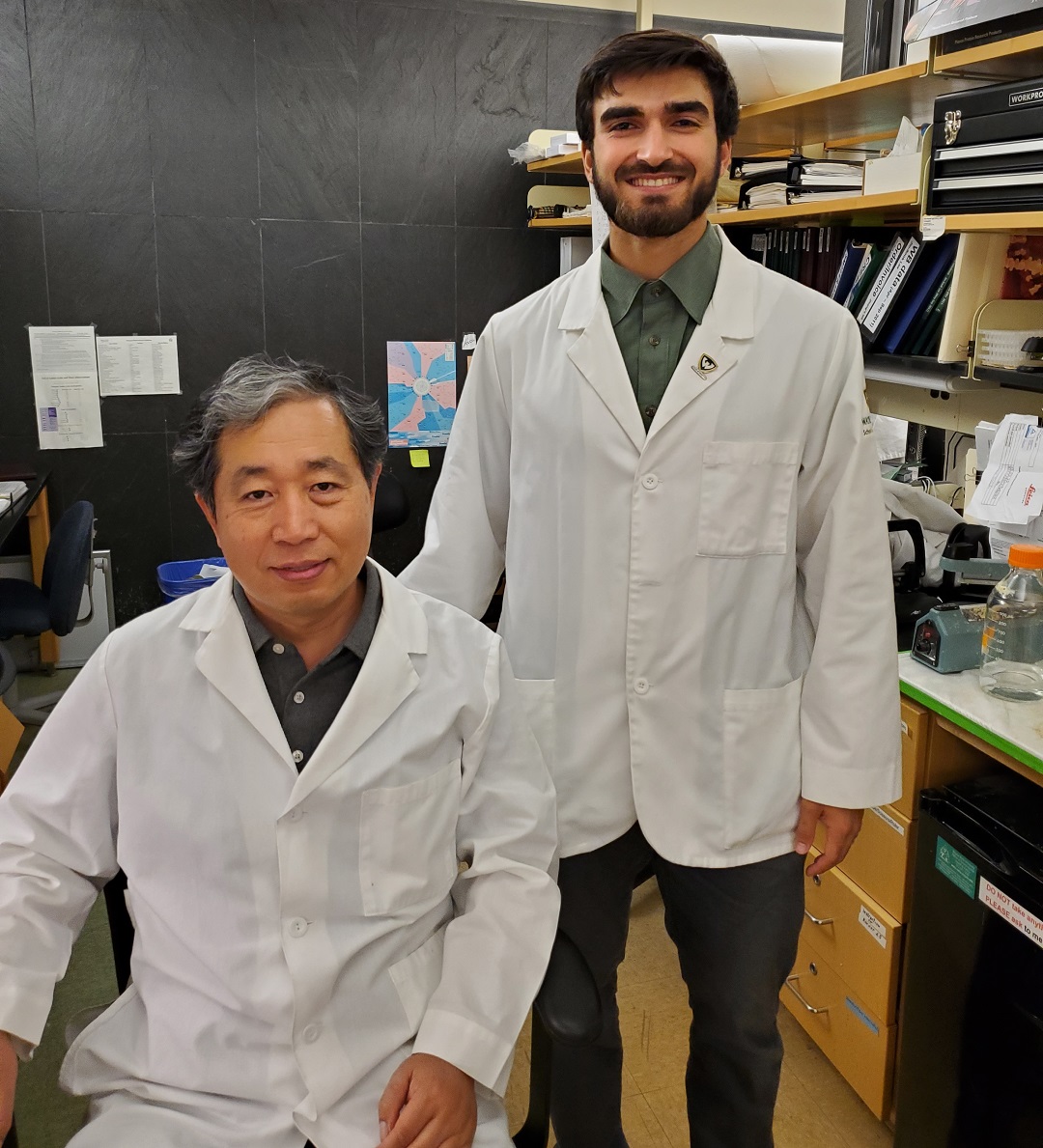A Wayne State University School of Medicine student has decoded the environmental and social-economic factors contributing to cardiovascular and metabolic diseases in Michigan.

Research conducted by El Hussain Shamsa, a member of the Warrior M.D. Class of 2023, revealed a dose-response relationship between a measurement of air pollution called airborne particulate matter, or PM2.5, and the occurrence of heart disease, hypertension and stroke.
“The links of fine airborne particulate matter exposure to occurrence of cardiovascular and metabolic diseases in Michigan, USA” is published in this month’s issue of PLOS Global Public Health, a journal addressing health challenges and inequities. The findings are also translational, having high impact on policy making related to environmental, social and economic issues in Michigan, and particularly Detroit, said Kezhong Zhang, Ph.D., the lab’s principal investigator.
Dr. Zhang is Shamsa’s mentor and a WSU professor of Molecular Medicine and Genetics, and of Biochemistry, Microbiology and Immunology. With Dr. Zhang, Shamsa discovered a dose-response relationship between concentrations of airborne particulate matter in fine and ultrafine ranges, specifically PM2.5 pollution. Michigan’s PM2.5 levels are much lower than those in heavily-polluted developing countries and are generally considered within the U.S. Environmental Protection Agency’s “acceptable” range for pollution standards, Dr. Zhang said.
However, the team showed that increases in county PM2.5 levels was significantly associated with increased hospitalizations for cardiovascular disease, including coronary and other types of heart disease and strokes. Increased levels of PM2.5 pollution were also significantly associated with cardiovascular disease deaths.
The study also showed that socio-economic factors, such as access to health care resources and household income, are significantly associated with the incidence of air pollution-associated mortality and morbidity. Black and Hispanic Americans have worsened cardiovascular or metabolic health outcomes. In addition to PM2.5, race and medication nonadherence provided a partial explanation of increased cardiovascular and stroke hospitalization rates in urban compared to rural counties.
“The state of Michigan possesses a typical urban/rural county status and racial and socioeconomic diversity as well as counties of specific health interest, such as the greater Detroit area, which contains a number of industrial facilities and transportation routes that are a major source of pollution,” Dr. Zhang said.
The project, including data collection, analysis and writing, is one of several Shamsa has taken on in Dr. Zhang's lab since starting medical school.
“I am so lucky to have the opportunity to work with Dr. Zhang at Wayne State,” Shamsa said. “My research skills have flourished under his guidance. I have reached the point where I am now confident identifying problems, planning experiments to investigate them, and collecting and analyzing data on my own. Dr. Zhang has always pushed me to think critically about each of our projects, and he encouraged the growth of my critical-thinking skills.”
Shamsa will pursue his “dream career” as a physician-scientist in Cardiology after graduating next year.
“I am very passionate about research and I wish to continue to expand my research skills throughout my career with the hopes of making major discoveries to help solve chronic disease,” he said. “Though we have discovered many medicines to help treat and reduce risk of cardiovascular disease, it remains the No. 1 cause of death in the U.S. There is still so much to discover about preventing cardiovascular disease, and this research study shows that pollution and related socioeconomic factors are important variables in the ever-rising rates of cardiovascular disease.”
The findings could have a direct impact on policymaking, indicating that acceptable pollution standards may need to be amended in order to reduce incidence of disease and death.
“Furthermore, we showed that racial and socio-economic factors, such as access to health care resources and household income, are significantly associated with the incidence of air pollution-associated mortality and morbidity,” Shamsa said. “This study allows health care workers to identify populations at increased risk for disease and implement preventative measures in these regions to combat the ever-rising cases of cardiovascular and cerebrovascular disease in the U.S.”
The work was partially supported by National Institutes of Health awards DK090313, DK126908, ES017829, EY016058 and P30 EY004068, and by the Wayne State University Medical Student Research Fellowship Award Program.
Other contributors to the work include Zhenfeng Song, Ph.D., postdoctoral fellow at the Center for Molecular Medicine and Genetics; Hyunbae Kim, Ph.D., assistant professor (Research) at the Center for Molecular Medicine and Genetics; Falah Shamsa, Ph.D., senior scientist of Cancer Coalition of Georgia, Atlanta; and Linda D. Hazlett, Ph.D., distinguished professor of Ophthalmology, Visual and Anatomical Sciences.